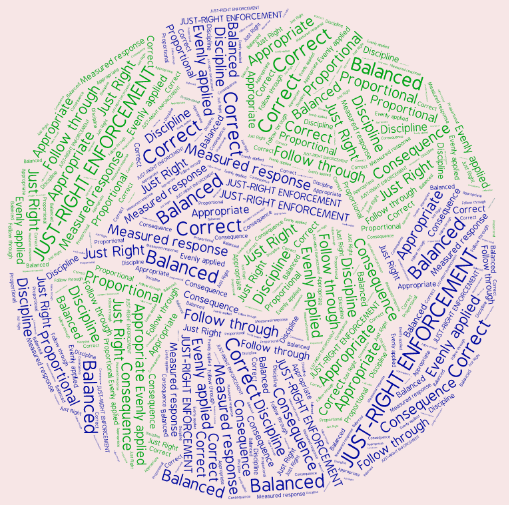Many people think that enforcement creates respect. But in reality, sometimes it does and sometimes it doesn’t. For those who see enforcement creating respect, it is easy to believe that more enforcement leads to more respect. These people tend to use Over-Enforcement. There are also those who think that any level of enforcement will create respect, even a low level. These people tend to use Under-Enforcement.
Some word for Just-Right Enforcement are:
Measured response, Appropriate, Balanced, Just-Right, Evenly applied, Keep in line, Correct, Discipline, Follow through, Consequence
The truth is that enforcement is a double edge sword. Its use doesn’t always create respect. Only Just-Right Enforcement leads to Just-Right Respect. An inappropriate level of enforcement will lead to Under-Respect.
Just-Right Enforcement creates Just-Right Enforcement by creating a deterrence to unwanted behavior. If deterrence is not sufficient to change behavior, then Just-Right Enforcement can also create Respect through the elimination of disrespectful behavior. To put it simply, elimination is to vote the offender off the island, or banishment, or the extreme version – make the offender walk the plank.
The key to Just-Right Enforcement is that it must be appropriate for the situation in the eye of the Beholder(s). The Beholder(s) is usually the rule breaker. But witnesses and bystanders are Beholders too. Therefore, while it is important that the enforcer see the enforcement as Just-Right, it is more important that the Beholders see it as Just-Right. If the Beholders see it as either Under-Enforcement or Over-Enforcement then Under-Respect will be created. “The punishment must fit the crime” in order for it to be effective.
For systems (environments) that have reoccurring violations, determining what is the most effective level of enforcement is a process of trial and error. Those systems that consistently use Just-Right Enforcement provide ever increasing stability and security through effective Boundary Setting. On the other hand, those systems that don’t use appropriate enforcement are plagued with ongoing violations and a lack of security.
When Boundary Setting is working, there is minimal need for enforcement. People follow the rules as a matter of course. The environment is safe and secure. Environments with ineffective Boundary Setting are either noticeably filled with policing agents or stand out by their complete lack of policing.
It is very difficult to find videos that show examples of Just-Right Enforcement. The final determination of an act of enforcement’s effectiveness really depends on the aftermath. Video clips rarely provide context. Therefore, the appropriateness of any level of enforcement is subject to viewer interpretation (in the eye of the Beholder).
What looks like Just-Right Enforcement to one person may look like Over-Enforcement to another, and appear to be Under-Enforcement to a third. In fact, this is the critical point that most people don’t understand about enforcement. The appropriate level of enforcement is not a fixed quantity. It is dynamic. It is fluid. It changes. It is situation dependant. And different people will view and judge it from different paradigms. In fact, Just-Right may be best defined by what it is NOT. Just-Right is not Over-Enforcement and is not Under-Enforcement. The proper level of enforcement ultimately must be gauged on its ability to create Respect for the Rules of behavior.
When there exists a feeling of appropriate enforcement as part of effective Boundary Setting in an environment, people literally feel safe and secure enough to wear no pants.

